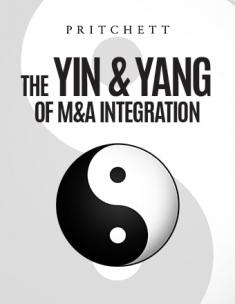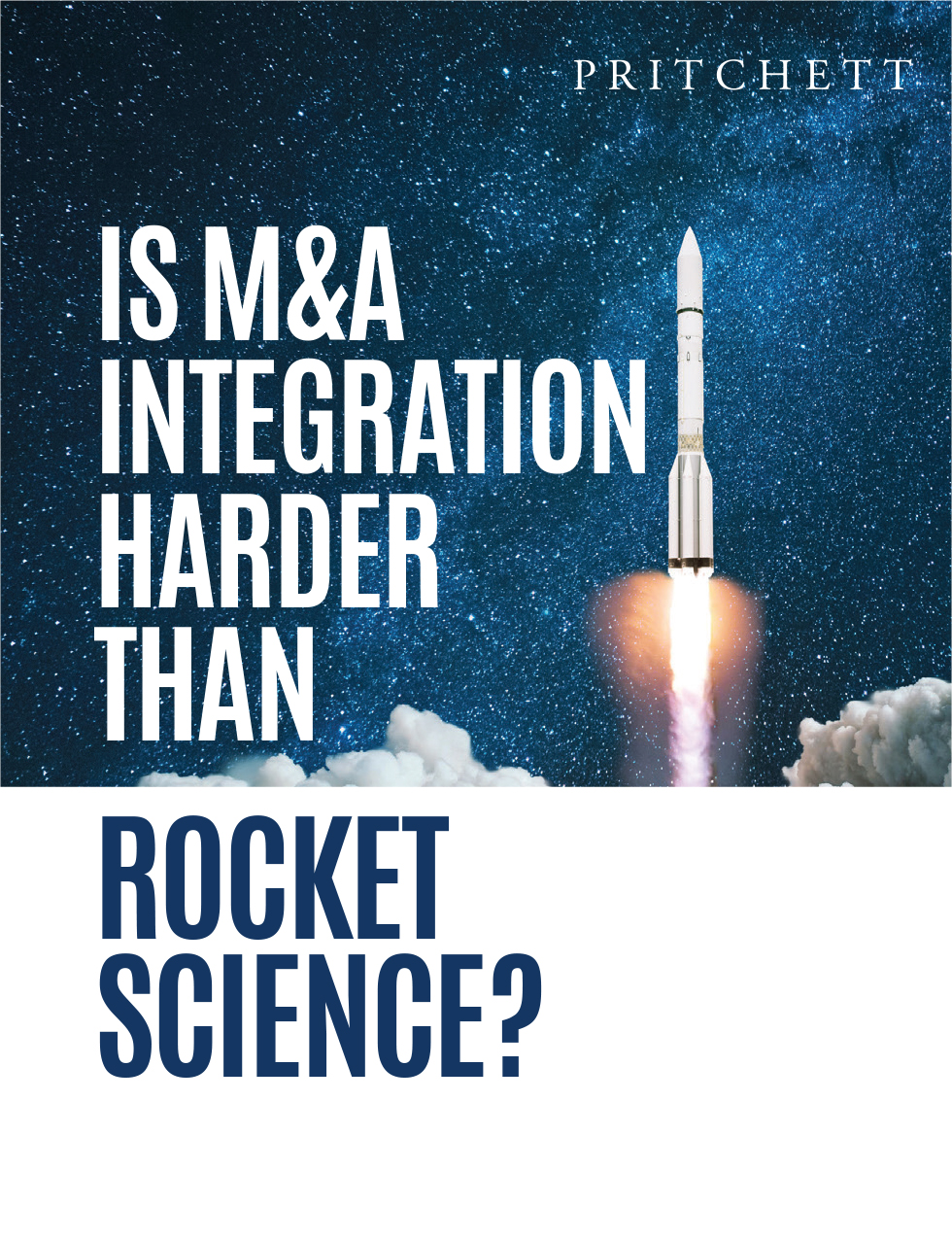The yin-yang symbol represents the ancient Chinese understanding of how things work. In the context of merger integration, think of the white area (yang) as the “hard stuff” and the black area (yin) as the “soft stuff.” Yang is project management, yin is people management.
[SO WHICH DO YOU THINK IS MORE IMPORTANT?}
|
Project Management |
People Management |
|
Deals with the “mechanics” of the integration |
Deals with the “personality” of the integration |
|
Focus is on structure, order, and control—e.g., planning, accountabilities, organization charts, integration velocity, timelines, flow charts, process, etc. |
Focus is on the psychological, social, political, and cultural issues in play that represent critical risk factors
|
|
Involves administrative, operational, and technical matters |
Involves the human side of organizational |
|
Concerned with the physical aspects of consolidating two organizations—
|
Concerned with the intangibles and atmospherics involved in consolidating two organizations—e.g., personal and cultural matters such as egos, emotions, ambitions, expectations, roles, power, status, values, beliefs, traditions, taboos, habits, etc. |
|
Methodology-oriented; procedural, systematic, analytical, logical, practical, by-the-numbers |
Attitudinal/behavioral-oriented; fluid, dynamic, and nonlinear; highly charged; combustible; many trigger points |
The yin and yang of merger integration are interconnected, tightly coupled. Both influence deal success/failure.
But back to the question: Is one more crucial for the success of your integration strategy? No, they are equal in importance.
Too often, merging organizations concentrate too heavily on one at the expense of the other. Both project and people management require adequate attention in order to realize the full potential of an acquisition.
PRITCHETT’s Merger Integration Certification Workshop does not take a piecemeal approach. It covers both the yin and yang.





